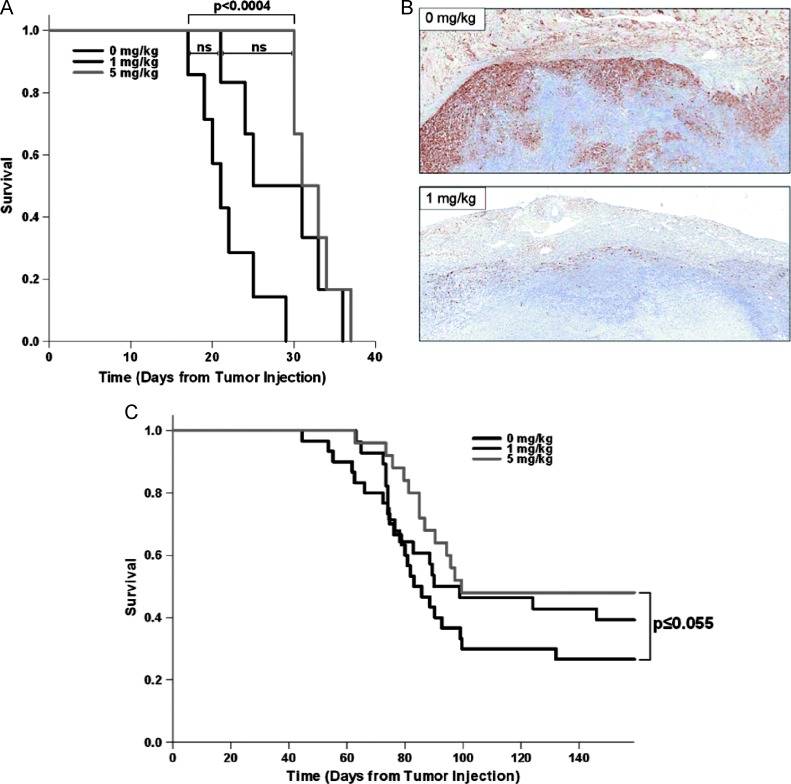Figure 3.
Rapamycin inhibits mTOR signaling at the tumor level to prolong survival and enhance CRT-induced tumor clearance in wild-type mice. (A) Kaplan-Meier survival analysis with log-rank significance test in wild-type male C57Bl/6 mice with E6/E7/Ras MOE tumors of the right flank receiving daily i.p. rapamycin or vehicle (0 mg/kg, n = 7; 1 mg/kg, n = 6; 5 mg/kg, n = 6; 0 to 1 mg/kg, NS; 1 to 5 mg/kg, NS; 0 to 5mg/kg, P < .0004). (B) Phospho-S6 immunohistochemical staining of tumor sections harvested at end point showing inhibited mTOR signaling with rapamycin treatment (1 mg/kg). (C) Survival analysis with log-rank significance test in wild-type male C57Bl/6 mice receiving daily rapamycin or vehicle for 21 days concurrent with once weekly cisplatin (0.132 mg/mouse) and radiation (8 Gy) for 3 weeks. The combined overall survival for three separate replicates of the experiment is shown (0 mg/kg, n = 30; 1 mg/kg, n = 28; 5 mg/kg, n = 25; 0 to 1 mg/kg, NS; 1 to 5 mg/kg, NS; 0 to 5 mg/kg, P ≤ .055). A rapamycin dose-dependent increase in tumor-free survival concurrent with equal dosing of CRT was observed, 27% with CRT alone, 39% at 1 mg/kg rapamycin + CRT, and 48% at 5 mg/kg rapamycin + CRT. The highest dose of rapamycin concurrent with CRT showed a 21% overall increase in tumor-free survival in wild-type mice compared to vehicle.

